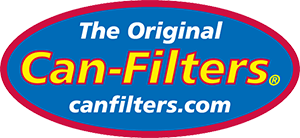Determining your Requirements
First off, you’ll want to determine the requirements of your application. Whether or not you are exhausting (going from a contaminated environment to a sterile environment in only a single pass through the filter) or recirculating, aka “scrubbing” (exhausting the system back into the contaminated space).
This is important because in an exhaust setting the air only passes through the filter one time so it is imperative that we remove as close to 100% of the contaminate as possible with that one chance. This requires that the contaminant have a certain time in contact with the carbon in order to be fully adsorbed. Our filters are marked with both exhaust and recirculating ratings for just this reason. If you are using this system to exhaust, DO NOT exceed the exhaust rating for the filter, the more this rating is exceeded the less contaminant will be adsorbed because the two will not have enough contact timefor adsorption to fully take place.
In a recirculating system, the contact time is not such a crucial number as we are taking contaminated air, filtering it, and releasing it back into what is typically and constantly decontaminated environment. It is for this reason that it is not necessary to remove 100% of the contaminant in a single pass. Instead we double the exhaust rating which will reduce the contact time, the goal here is to still remove a large portion of the contaminant but to get raise the cycle rate of air through the filter above the rate of emission from the source. Now, instead of removing 99.9% of the contaminant in a single pass we are getting closer to 60% but we are getting twice as many cycles through the filter in the same amount of time and over time, reducing the overall build-up of contaminant in the environment. This is ok because we are not exhausting into a sterile space but instead to a space that is already more contaminated, after the system has run for a few hours, you will notice that the build-up of contaminant has been reduced to only the constant emission.
Recirculating systems can be desirable when atmospheric adjustments have been made to the environment such as the addition of air conditioning or CO2 which exhausting outside can be less efficient and more expensive than leaving the front door open. Recirculating systems are intended to be used in sealed rooms.
Sizing Your Space
Once you’ve determined the type of system you need, it’s time to size your space.
Typically for exhaust we recommend a simple length x width x height /3 calculation. This will give you the amount of air (cubic feet per minute, CFM) that you will need to move to properly ventilate your space allowing for a three-minute air exchange (all the air in the space is exchanged for fresh air every three minutes). This is the number you will match your filter to.
Example:
Room size: 10’x12’x8’ (960 cubic feet)
960 cubic feet / 3 minutes = 320CFM (Minimum recommended CFM to exchange the air every 3 minutes)
For recirculating systems, you can use the same length x width x height but divide by 1.5. This will give you a high cycle rate while still ensuring the removal of a majority of contaminant with each pass through the filter.
Great, now that you know which filter to use its time to find the fan to pair with it. Take that CFM target used to find your filter and match it with the closest fan rating. It is wise to factor in a 10% -25% drop in airflow due to the resistance of pulling through the carbon filter. Just remember, if you are running an exhaust system, DO NOT choose a fan that will exceed the exhaust rating of your filter.

